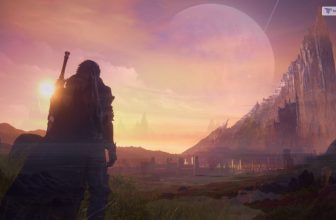
Game character design is a crucial aspect of video game development.
While the visual appearance and gameplay mechanics are important, a character’s backstory can also play a significant role in their success. A well-crafted backstory can give a character depth and nuance, making them more relatable and engaging to players.
The purpose of this article is to explore the importance of backstory in game character design, including how it can influence gameplay mechanics and deepen player engagement. We’ll also discuss the key elements of a compelling backstory and provide tips for avoiding common pitfalls.
What is a Backstory?
In the context of game character design, a backstory refers to the history, experiences, and personality traits that make up a character’s past. It can include information such as the character’s upbringing, relationships, and past events that have shaped who they are.
Having a well-crafted backstory for a character is important because it can provide players with a deeper understanding of their motivations and actions. It can also make a character more relatable and human, rather than just a collection of pixels or polygons on the screen.
A backstory can add richness and complexity to a character, making them stand out from other characters in the game and helping to create a more immersive and memorable gaming experience. Additionally, a character’s backstory can inform gameplay mechanics, providing a rationale for their abilities and limitations. Without a compelling backstory, a character can feel shallow and one-dimensional, which can lead to players losing interest in the game.
How Backstory Influences Game Design
If you are a fan of video games, you probably have some favorite characters that you love to play as or follow their stories. But have you ever wondered how these characters came to be? What made them who they are today? What drives them to do what they do?
These questions are answered by a character’s backstory, which is the history and background of a character before the events of the game. A character’s backstory can include their origin, family, personality, motivation, goals, flaws, relationships, and more.
A character’s backstory is not just a nice-to-have feature for storytelling purposes. It can also have a significant impact on game design and mechanics. In this blog post, we will explore how a character’s backstory can influence game mechanics in various ways and provide examples of games that effectively use character backstories to enhance gameplay.
Here are some of the ways that backstory influences game design:
- It shapes a character’s personality and voice
- It determines a character’s motivation and goals
- It reveals a character’s strengths and weaknesses
- It creates meaningful relationships with other characters
- It gives a character challenges and choices that have consequences for gameplay
Let’s look at each of these aspects in more detail.
How Backstory Influences Personality and Voice
One of the most obvious ways that backstory influences the game design is by shaping a character’s personality and voice. A character’s personality and voice affect how they interact with other characters and the environment in the game. They also affect how the player perceives and relates to them.
For example, in The Last of Us (2013), one of the main characters is Ellie, a 14-year-old girl who was born after a fungal outbreak that turned most of humanity into zombie-like creatures. Ellie’s backstory reveals that she never knew her parents, grew up in a harsh military quarantine zone, and was bitten by an infected person but somehow immune to the infection.
These experiences shaped her personality as brave, resilient, sarcastic, curious, and loyal. They also influenced her voice as witty, foul-mouthed, expressive, and sometimes naive. Ellie’s personality and voice make her an engaging and memorable character that players care about throughout the game.
They also affect how she interacts with other characters such as Joel (her surrogate father figure), Riley (her best friend), Dina (her love interest), etc., creating emotional moments that drive the story forward.
Some other games that use personality and voice effectively are:
- Mass Effect: The player can choose their own personality traits for Commander Shepard, such as Paragon (heroic), Renegade (anti-heroic), or somewhere in between, which affects their dialogue options, reputation, morality, and relationships with other characters.
- Bioshock: The player can hear audio diaries from various characters throughout the game, which reveal their personalities, motivations, secrets, and opinions about Rapture, the underwater city where the game takes place.
- Portal: The player interacts with GLaDOS, an artificial intelligence that guides them through a series of tests in Aperture Science. GLaDOS has a sarcastic, passive-aggressive, manipulative, and sometimes murderous personality that makes her one of the most iconic villains in video games.
Elements of a Compelling Backstory
A compelling backstory for a game character typically includes several key elements that help to make the character relatable and engaging to players.
Some of these elements include:
- Motivations: A character’s backstory should provide insight into their motivations and goals. This can help players understand why the character is taking certain actions and make them more invested in the character’s journey.
- Conflict: Every good story has conflict, and a character’s backstory should be no different. Whether it’s a traumatic event from their past or an ongoing struggle, conflict helps to create tension and makes the character’s journey more compelling.
- Relationships: Characters do not exist in a vacuum, and their relationships with other characters can be a key element of their backstory. Whether it’s a romantic relationship, a friendship, or a rivalry, relationships can add depth and nuance to a character’s personality.
- Personality traits: A character’s backstory can also reveal important personality traits that shape their behavior and decision-making. These traits can help players understand why a character acts in a certain way and make them feel more authentic.
Some examples of well-crafted character backstories in popular games include:
- Geralt of Rivia from The Witcher series: Geralt’s backstory includes being trained as a witcher, which gives him supernatural abilities but also makes him an outcast in society. He also has a complicated romantic history, which adds depth to his relationships with other characters.
- Lara Croft from the Tomb Raider series: Lara’s backstory includes the death of her parents and her desire to follow in their footsteps as an adventurer. This provides motivation for her actions throughout the series and adds emotional weight to her character.
- Kratos from the God of War series: Kratos’ backstory includes the murder of his family, which drives his quest for revenge against the gods. This conflict provides the basis for the entire series and makes Kratos a compelling and sympathetic character.
Challenges and Pitfalls in Backstory Development
Developing a character backstory can be challenging, as there are several potential pitfalls that can hinder the effectiveness of the backstory. Some common challenges and pitfalls in developing a character backstory include:
- Over-explaining: Providing too much detail about a character’s backstory can be overwhelming and can distract from the game’s main storyline. It is important to strike a balance between providing enough information to make the character relatable and engaging, without going into unnecessary detail.
- Contrivance: If a character’s backstory feels too forced or unrealistic, it can break the player’s immersion in the game world. A backstory should feel organic and plausible, rather than something that was created solely for the sake of adding depth to a character.
- Clichés: Overused story elements or character traits can make a backstory feel clichéd and unoriginal. It’s important to avoid relying on tired tropes and instead strive for originality and depth.
To avoid these pitfalls and create an effective backstory, game designers can employ several strategies:
- Focus on the essentials: Rather than trying to include every detail of a character’s backstory, focus on the key elements that will help to make the character more relatable and engaging.
- Keep it believable: When crafting a backstory, consider whether the events and character traits feel realistic and plausible. If something feels contrived or forced, it may be best to reconsider or modify that element.
- Think outside the box: Avoid relying on clichéd tropes and instead think creatively about the character’s backstory. Consider elements that are unique or unexpected, which can help to make the character stand out from others in the game.
Overall, a well-crafted backstory can be a powerful tool in-game character design. By focusing on the essential elements, keeping it believable, and avoiding clichés, designers can create characters that are more relatable, engaging, and memorable.
Conclusion
In conclusion, the backstory is an essential element of game character design that can enrich the game world and the player’s experience. Backstory can reveal a character’s personality, goals, conflicts, and motivations, and can help to create a connection between the character and the player. Backstory can also influence the character’s appearance, abilities, and interactions with other characters and the environment. A well-crafted backstory can make a game character more memorable, believable, and engaging.
Read Also:






